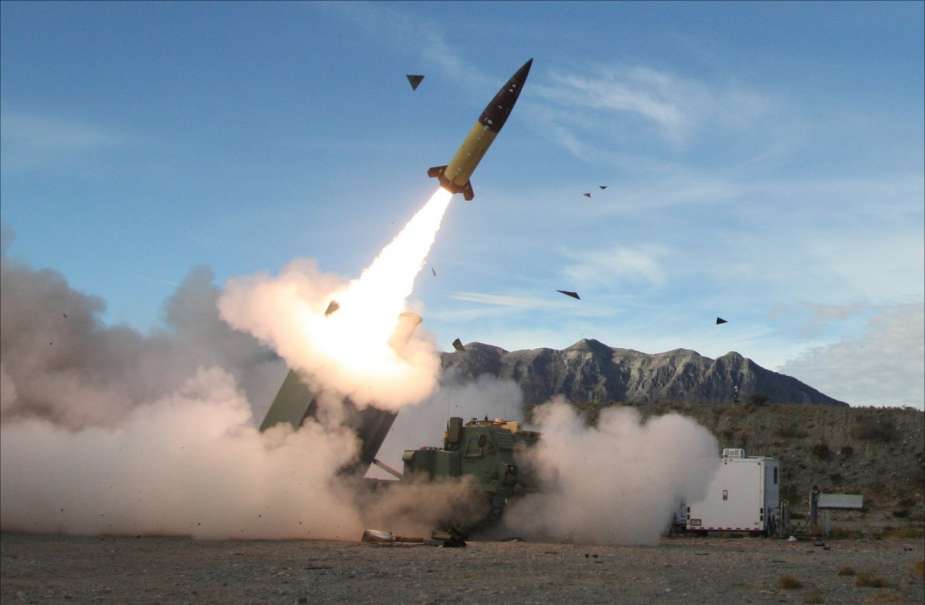US Secretly Sent Long-Range ATACMS Missiles to Ukraine
According to a Politico article dated April 24, 2024, the United States quietly shipped long-range ATACMS missiles to Ukraine last month, marking a first during the two-year conflict. Kyiv's forces have already used these weapons to strike deep behind Russian lines. The United States, via Jake Sullivan, advisor to President Biden, confirmed this information on 25 April 2024.
Follow Army Recognition on Google News at this link

The ATACMS (Army Tactical Missile System) is a tactical ballistic missile designed and produced by the United States. (Picture source: US DoD)
In March, the U.S. approved the transfer of several Army Tactical Missile Systems (ATACMS) capable of reaching almost 200 miles, said a senior Biden administration official and two other U.S. officials. This enabled Ukraine to threaten more Russian targets within its sovereign territory. These long-range missiles are now part of a new $1 billion military aid package that President Joe Biden approved on Wednesday, according to one of the American officials.
According to the New York Times, Ukrainian forces used ATACMS missiles twice. The first attack took place on 16 April 2024 and targeted an air base at Djankoi in Crimea. This led to the destruction of 4 Russian S-400 air defense systems plus 3 radar stations. A second attack is said to have hit a radar not far from Mariupol on 23 April 2024.
The delivery of this version of the ATACMS ends a long saga where Ukraine had been requesting access to this weapon for years, creating tensions between Washington and Kyiv. Ukrainian forces have used these long-range missiles twice, targeting a Russian military base in Crimea and more recently Russian forces east of Berdyansk, near the Sea of Azov.
The U.S. government announced on Wednesday a new $1 billion weapons package that will be quickly transferred to Ukraine, following Biden's approval of the delayed foreign aid bill, which was passed by the Senate this week. This package also includes Stinger anti-aircraft missiles, 155mm artillery shells, Bradley Fighting Vehicles, Javelin anti-tank systems, and Claymore anti-personnel munitions, according to a Pentagon press release.
The decision to send ATACMS was initially hesitated by the U.S., even under sustained domestic and international pressure, due to stockpile concerns and fear of escalating the conflict. However, Russia's increasingly brutal tactics and increased American production of the long-range version convinced Biden to authorize the transfer.
The ATACMS (Army Tactical Missile System) is a short-range tactical ballistic missile designed and used by the United States. This missile system is notable for its high precision, typically achieving an error margin of less than 10 meters. The launch weight varies between 1,600 and 2,300 kilograms depending on the specific variant of the missile.
Propelled at an approximate speed of Mach 3, or about 3,700 km/h, the ATACMS can strike targets between 160 and 300 kilometers away. Its design is based on an advanced guidance system that combines GPS and INS (inertial navigation system).
The launcher vehicles compatible with the ATACMS include the M270 and the M142 HIMARS, which are in the possession of Ukrainian forces, two multiple rocket launch systems (MLRS) that allow high operational mobility and flexibility on the battlefield. In terms of dimensions, the ATACMS measures 5.75 meters in length, 2.49 meters in width, and 2.4 meters in height.
Senior U.S. officials, including National Security Advisor Jake Sullivan, Secretary of State Antony Blinken, Secretary of Defense Lloyd Austin, and Chairman of the Joint Chiefs of Staff General C.Q. Brown, unanimously recommended this arms transfer.
By enabling Ukraine to use the ATACMS, the Biden administration hopes to give new momentum to Ukraine in the two-year war, forcing Russia to reposition critical command and control nodes and other high-value targets, said a second U.S. official.
Defense News April 2024
- Hits: 1640
















